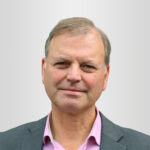Digital Health and Wearable Technology 2018 at Excel
PDD’s Graham Lacy attended the Digital Health and Wearable Technology Shows at Excel.
This twinned exhibition showcases recent innovations in connected devices for the healthcare and wellness industry as well as wearable technologies from other categories.
Many of the new devices were simple bio-sensors taken from previous ‘wearable technology’ form factors of limb bands (wrists on 2-legged mammals and necks on 4-legged) providing real-time monitoring of health, wellness and whereabouts.
Devices were either at the sensing or giving end of communication and these shared a common aim to minimise physiological burden. Amongst the sensors were other ‘jewellery’ formats such as rings and pendants as well as textile and in-clothing forms.
At the other extreme, RIVR in co-operation with the Leicestershire Fire and Rescue Service, showed how much physical technology can be worn with purposeful effect. Donning a powerful, graphics-accelerated laptop in backpack form, a VR headset and holding a teleporter hand control, they demonstrated a training aid for the forensic examination of fires. In another training exercise, and wearing a first responder respirator (coincidentally designed by PDD), breathing apparatus and protective clothing, fire crews were given an even greater level of simulation of the real-world wearables.



